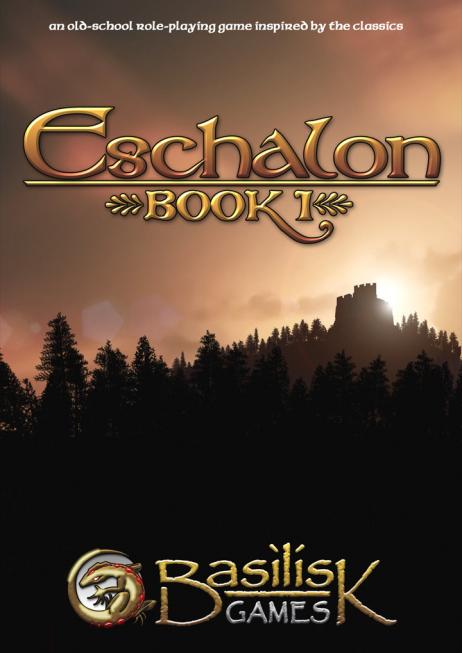Eschalon: Book I Review
-
Category: ReviewsHits: 22918

Article Index
Page 1 of 4
What is a retro-RPG? It is not, as one game industry bigwig told me with a condescending smirk several years ago, soon after leaving his last Important Administrative Position in food production, (A game that looks bad.) He was simply doing what VPs have done since time immemorial, accepting superficial talking points of their new corporate culture as the divine truth. If a game hasn't got the latest graphics, as this version of that truth goes, it won't sell, and of course it won't get the latest graphics if the developers haven't got corporate patronage. So what the bigwig in question was really saying, is that (A retro-RPG is a game that doesn't have the latest graphics, because they haven't got the backing of a corporation like the one that hired me, which is the only kind of game creator that matters. And the only reason I'm speaking to you right now is because my fellow VPs won't let me into the conference room since I smell bad.)Many of us who play retro-RPGs would add that graphics don't tell the whole story, and that a lot depends on the individual game. Planescape: Torment offers arguably the most well-developed and thoughtful plot and party NPCs of any RPG ever made. Ultima VII remains unrivalled for player interactivity with a huge, detailed environment. Betrayal at Krondor had a unique combat system, a world that changed over time, and in its traps and riddles the best system of non-physical game puzzles ever made. There's no reason to belittle these titles, or to scorn playing them years later. What they offer is evergreen.
Then, there is a class of retro-RPGs that don't stand out, but make for good playing sessions, nonetheless. As a group, they present the advantages of inexpensive cost, pain-free installation, and low memory guzzling. Among these, Eschalon: Book I wears its retro-styling with pride.
Starting Out
The game plays in 800 x 600, and launches in windowed or fullscreen mode. You start out by selecting one of five areas of origin, belief systems, and classes. Your origin gives you bonuses to one or more of the eight basic game stats; beliefs trade off spells or specials for disadvantages; and classes.? Classes actually mean very little in the game. Fighters get the Swords skill, while Rangers receive the Bows skill. This means that classes are only mildly differentiated, in a game which puts a premium on the development of stats and 24 skills. I don't have a problem with this, but as so often happens in such games Divine Divinity comes to mind the seeming openness of personal development actually conceals a very small number of effective paths to success. While there are various ways to open chests and get to one's tactical goals, professions as such lack the colorful individuality that aid player-defined replayability in titles like Baldur's Gate II.
As a result, rogues receive no bonus to backstabbing, which considerably weakens the attractions of the class. As for magick users (the term for mages), their spell damage simply doesn't keep pace with the increase in enemy power as the game progresses. Your best bet is to become a melee fighter specializing in a single weapon type, perhaps with sidelines in archery and alchemy: the former to kill things at a distance, the latter to create useful potions (with a nice selection, here) and enchantments.
Once past that point, you're sent out into the world, armed, and not exactly very dangerous. You've possibly got a spell or two, perhaps a weapon hopefully a good starting one, maybe not and a few basic pieces of equipment. Your best bet is to take your gold and supplies to the nearest town.


